Noodles with quickfried eel shreds and shelled shrimps
Shrimp fried eel noodles is a famous traditional food in Kui yuan hall, Hangzhou City, Zhejiang province. When the shrimp is cooked with fried eel noodles, select the strong fresh eel, chop off the head, cut off the tail and remove the bones, cut the eel into slices, fry the noodles with vegetable oil, stir-fry the meat oil, pour the sesame oil until the eel is crisp, wash the fresh river shrimp, add the egg white and stir-fry until it is white and tender; cook the noodles with the original juice, make the noodles inhale the aroma of eel fish. The juice is thick and fresh. Shrimp fried eel noodles for the Kui yuan Pavilion Ning style noodles.
1. The eel is slaughtered and treated. Slice the meat and cook it in a pot.
2. Put the noodles rolled many times into boiling water and boil them until they are 7 or 8 ripe. Remove the noodles from the boiling water and cool them down. Put them into the fence or the leaky spoon. Drain the water to form noodles.
3. Wash shrimp and add starch, egg white, monosodium glutamate, salt, cooking wine and water slurry.
4, cut the eel slices into 8 cm long segments, wash and drain.
5. Place the frying pan on a high fire and simmer the vegetable oil until 80% hot. Deep-fry the eel fragments until the eel skin is crisp and crisp. Pour in a leaking spoon and drain the oil.
6. Stir-fry the pan on a high fire, put a small amount of lard, put in scallions and ginger, stir-fry fragrance, put in eel slices, add soy sauce, wine, sugar and a little broth about 50 ml, after the taste of MSG filled up;
7. Put 200 ml broth and noodle knot in the pot, put it on the fire and boil, then skim off the foam, add soy sauce and lard, and put it into the eel brine. When the soup is thick, add monosodium glutamate and put it in a bowl.
8. Cover the eel slices again, skim the boiled shrimps in boiling water, put them on the eel slices, and pour the sesame oil on them.
noodle
(dry-cut noodles): the main nutrients of noodles are protein, fat, carbohydrates, etc. noodles are easy to digest and absorb, improve anemia, enhance immunity, balance nutritional absorption and other effects.
Eel
Eel is rich in DHA and lecithin, which are the main components of cell membranes in various organs and tissues of the human body, and is an indispensable nutrient for brain cells; eel contains "eel" which can reduce blood sugar and regulate blood sugar, and contains very little fat, which is an ideal food for diabetic patients; eel contains rich vitamin A, can improve vision, promote blood sugar The metabolism of the membrane. Eel has the functions of tonifying qi, nourishing blood, invigorating yang and spleen, nourishing liver and kidney, dispelling wind and dredging collaterals. It is suitable for hemorrhoids, Qi deficiency and prolapse of anus, postpartum emaciation, women's strain, uterine prolapse, kidney deficiency and low back pain, limbs weakness, rheumatic paralysis, mouth and eye deviation, etc.
Shrimp meat
Shrimp meat is rich in nutrients, soft meat, easy to digest, is a very good food for people who are weak and need to be recuperated after illness; Shrimp meat is rich in magnesium, can protect the cardiovascular system, it can reduce blood cholesterol content, prevent arteriosclerosis, but also can expand the coronary artery, is conducive to preventing hypertension And myocardial infarction; shrimp meat and tonifying kidney Yang, breast anti-toxic, nourishing blood and strengthening essence, removing blood stasis and detoxification, tonifying Qi and nourishing Yang, dredging collaterals and relieving pain, appetizing and resolving phlegm and other effects.
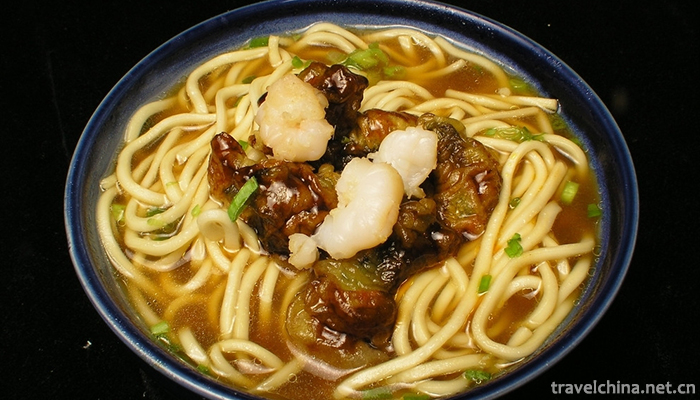
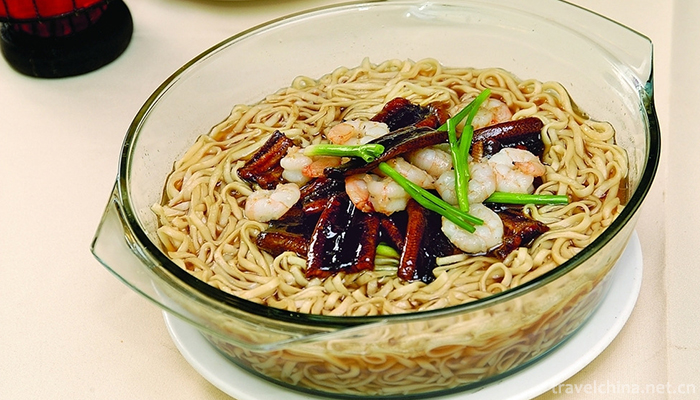
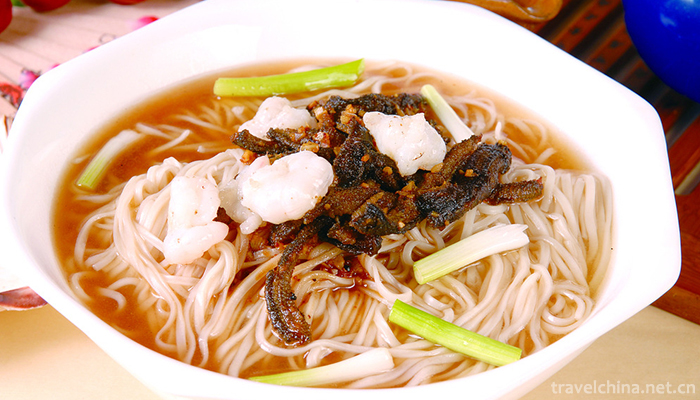
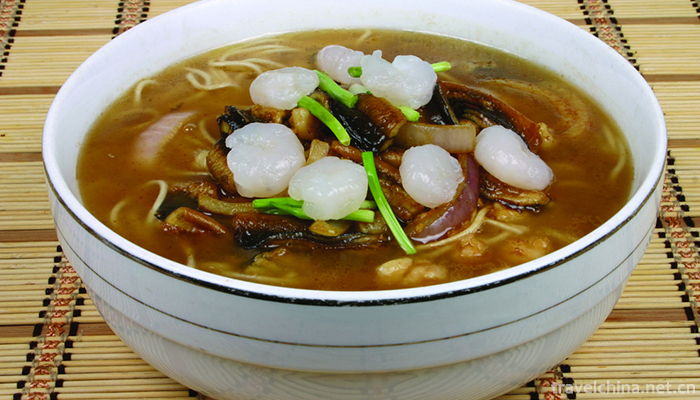
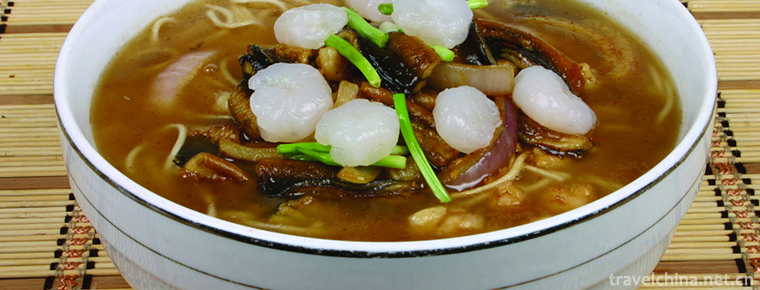
-
1.Tianmu Lake
Tianmu Lake is located eight kilometers south of Liyang City, Changzhou. It is named Tianmu Lake because it belongs to the remnants of Tianmu Mountain
Time 2018-12-06 -
2.Baimaiquan Park
Baimaiquan Scenic Area, located at No. 2017 Huiquan Road, Zhangqiu District, Jinan City, Shandong Province, is located in the eastern part of Jinan City. Founded in 1986
Time 2019-01-02 -
3.Floral water bay hot spring resort
Huashuiwan Hot Spring Resort is located at the foot of Xiling Snow Mountain in Dayi County, Chengdu, Sichuan Province, surrounded by mountains on all sides. National AAAA scenic spot.
Time 2019-01-17 -
4.Poyang Lake National Nature Reserve
Jiangxi Poyang Lake National Nature Reserve is located in the north of Jiangxi Province. It is a nature reserve for wildlife protection. The main protected objects are rare migratory
Time 2019-02-07 -
5.Eighteen Sayings on Tibetan Wedding Banquet
The Eighteenth Tibetan Wedding Banquet is a kind of folk oral literature spread in the Tibetan inhabited areas of the eastern agricultural region of Qinghai Province. Its manifestation is the eighteen
Time 2019-04-07 -
6.Restoration Techniques of Ancient Ceramics
Ancient ceramic restoration technology is a special artistic creation of comprehensive modeling, sculpture, color, calligraphy, painting, chemical industry, etc. Ancient Ceramics Restoration must be c
Time 2019-05-01 -
7.Hu Ji Shu Hui
Hu Jishu Fair is a traditional folk art fair that rose and took root in Huji Town, Huimin County, Shandong Province. Huji is the largest market town in the southeast of Huimin County
Time 2019-05-03 -
8.Hu Yiyang Legend
Hu Yiyang (about 1639-1718) is a good prime minister. He is a native of Liuting Village, Renhua Township, Moxian County (now Liuting Street, Chengyang District, Qingdao City).
Time 2019-05-03 -
9.Hui Folk Stories
Hui Folklore Stories is a book published by Ningxia People's Publishing House in 2009 by Li Shujiang and Wang Zhengwei.
Time 2019-05-04 -
10.Traditional Textile Dyeing Weaving and Embroidery Techniques of the Li Nationality
The traditional spinning, dyeing, weaving and embroidery techniques of the Li nationality, the traditional handicraft techniques of Hainan Province, are one of the national intangible cultural heritag
Time 2019-05-12 -
11.Administrative division of Mianyang
Mianyang City has jurisdiction over 9 county-level administrative divisions (Municipal District 3, county-level city 1, county-5), 166 township level administrative divisions (street 13, town 122, township 31), and manages the Science City Office of Sichuan
Time 2020-12-14 -
12.Plant resources in Leshan
Leshan City is located in the middle subtropical zone, which is located in the southwest of Sichuan Basin and Hengduan Mountain area. Emei Mountain is the most representative area. There are 1452 species, 585 genera and 141 families of seed plants
Time 2020-12-17